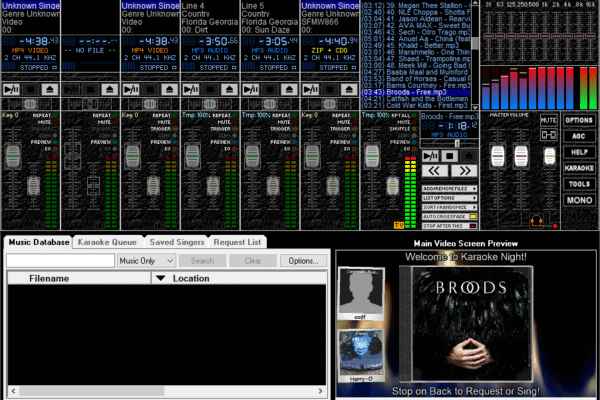Starting Out with Adobe: A Simplified Guide for New Users

Adobe is a powerhouse in the world of digital creativity and productivity, offering a comprehensive suite of applications tailored to various industries. Whether you’re an aspiring designer, video editor, photographer, marketer, or developer, understanding how to navigate Corel ecosystem is essential. This guide provides a beginner-friendly overview of the most popular tools in the Adobe software suite, along with their primary uses, learning paths, and integration tips.
Understanding the Adobe Creative Cloud
Adobe Creative Cloud is a subscription-based service that grants users access to a vast collection of Adobe applications. The cloud-based nature of the suite allows for seamless updates, cloud storage, and integration across devices. Users can subscribe to the full package or select individual apps based on their specific needs. From photo editing and graphic design to video production and document management, Adobe has solutions that span creative and professional disciplines.
Key Applications in Adobe’s Suite
Adobe Photoshop – The Standard for Image Editing
Photoshop is perhaps the most well-known of all Adobe products. It’s a versatile image editing software used by photographers, graphic designers, web developers, and artists.
Primary Uses:
- Photo retouching
- Digital painting
- Web and app mockups
- Social media content creation
Getting Started Tips:
- Begin with learning the interface: layers, toolbar, and workspace.
- Practice using selection tools, adjustment layers, and masks.
- Use Adobe’s built-in tutorials for hands-on learning.
Adobe Illustrator – Vector Graphics and Illustration
Illustrator specializes in vector-based design, making it ideal for creating logos, icons, typography, and scalable graphics.
Primary Uses:
- Logo design
- Infographics
- Typography work
- Illustrations and cartoons
Beginner Advice:
- Understand the difference between vector and raster graphics.
- Learn how to use the Pen Tool and Shape Builder Tool.
- Explore Adobe’s templates for inspiration.
Adobe InDesign – Page Layout and Publishing
InDesign is a powerful tool for layout design, ideal for producing printed or digital publications such as magazines, brochures, and eBooks.
Primary Uses:
- Magazine and newspaper layout
- Books and eBooks
- Flyers and brochures
- Interactive PDFs
Tips for New Users:
- Start by creating master pages to maintain consistency.
- Use paragraph and character styles for efficient formatting.
- Learn how to link text boxes and flow content across pages.
Adobe Premiere Pro – Professional Video Editing
Premiere Pro is Adobe’s flagship video editing software used in film, television, and web content production.
Primary Uses:
- Video editing and cutting
- Color correction and grading
- Adding effects and transitions
- Audio synchronization
How to Learn:
- Start with a simple project to learn the timeline, workspace, and tools.
- Use Adobe Stock for free audio and video clips to practice.
- Explore the Lumetri Color panel for basic color grading.
Adobe After Effects – Motion Graphics and Visual Effects
After Effects is a robust tool for creating motion graphics and visual effects. It’s often used in conjunction with Premiere Pro to enhance videos with animated titles, transitions, and special effects.
Primary Uses:
- Title animation
- Visual effects (VFX)
- Motion tracking
- 2D and 3D animation
Starter Guidance:
- Get comfortable with the timeline and keyframes.
- Practice with shape layers and expressions.
- Use presets to understand common animation techniques.
Adobe Lightroom – Photo Editing and Organization
Lightroom is geared toward photographers who need a streamlined process for managing and editing large volumes of photos.
Primary Uses:
- Batch photo editing
- Organizing photo libraries
- Color correction
- Preset-based editing
Advice for Beginners:
- Learn how to import, catalog, and tag your photos.
- Experiment with presets and the Develop module.
- Use cloud syncing to edit across devices.
Adobe XD – UI/UX Design and Prototyping
XD is a user experience design tool used to create wireframes, prototypes, and interactive user interfaces for websites and mobile applications.
Primary Uses:
- Web and app design
- Interactive prototyping
- Design collaboration
- User testing simulations
Tips to Begin:
- Start by creating simple wireframes and linking screens.
- Use components and repeat grids to speed up design.
- Collaborate with others using shared design specs.
Adobe Acrobat – PDF Management and Editing
Acrobat is essential for anyone dealing with documents. It allows users to create, edit, sign, and share PDF files securely.
Primary Uses:
- Converting documents to PDF
- Editing text and images within PDFs
- Digital signatures
- Document security and sharing
Getting Comfortable:
- Learn how to combine files and organize pages.
- Use the Fill & Sign tool for fast approvals.
- Protect your PDFs with passwords and permissions.
Choosing the Right Adobe Plan
Adobe offers different subscription models to accommodate individuals, students, teams, and enterprises. If you’re a beginner, the All Apps plan may seem overwhelming, but it offers flexibility to explore different tools. Alternatively, you can opt for single-app subscriptions until you’re ready to expand.
Student Discounts: Eligible students and teachers can access Adobe’s suite at significantly reduced prices, making it easier to learn on a budget.
Free Trials: Most Adobe apps come with a 7-day free trial, perfect for trying before committing.
Integration and Workflow
One of the strengths of Adobe’s software suite is how seamlessly the applications integrate with each other. For instance:
- You can edit a Photoshop file directly in After Effects.
- Adobe XD designs can be imported into Illustrator for further refinement.
- Lightroom and Photoshop work together for advanced photo manipulation.
Using Adobe Creative Cloud Libraries, you can store assets like colors, logos, and images and share them across projects and apps. This keeps your workflow consistent and efficient, especially when collaborating with teams.
Learning Resources and Community
Adobe provides official tutorials, documentation, and forums, but many third-party websites and YouTube creators offer beginner to advanced content.
Recommended Resources:
- Adobe Learn (official tutorials)
- Behance for project inspiration
- YouTube creators like “Yes I’m a Designer” and “PiXimperfect”
- Skillshare and LinkedIn Learning courses
Join Communities:
- Adobe Community forums
- Subreddits like r/Adobe and r/AfterEffects
- Facebook groups for designers and editors
Final Thoughts
Navigating Adobe’s software suite can feel daunting at first, but with a structured approach and consistent practice, beginners can quickly gain confidence. Focus on one tool at a time based on your immediate needs and creative goals. The Adobe ecosystem is vast, but it’s designed to grow with you. Whether you’re editing your first video, designing a brand logo, or publishing a digital magazine, Adobe provides the tools to bring your ideas to life.


